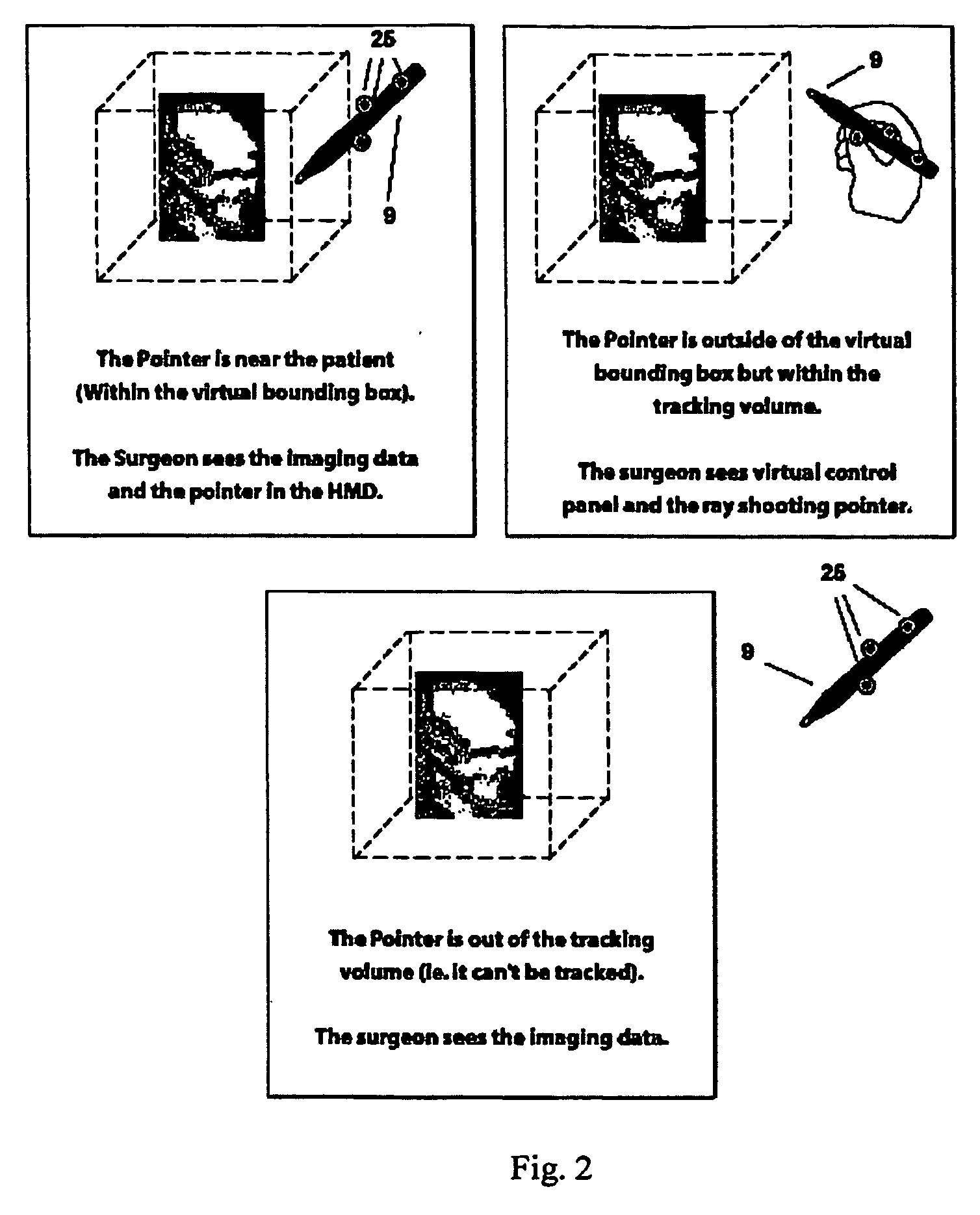Guide system
- Summary
- Abstract
- Description
- Claims
- Application Information
AI Technical Summary
Benefits of technology
Problems solved by technology
Method used
Image
Examples
Embodiment Construction
[0032] Prior to performance of a surgical operation using the embodiment of the invention, the patient is scanned, such as by standard CT and / or MRI scanners. The image series thus generated is transferred to the VR environment of the Dextroscope and the data is co-registered and displayed as a multimodal stereoscopic object, in the manner disclosed in the publications describing the Dextroscope referred to above. During the planning session in the Dextroscope, the user identifies relevant surgical structures and displays them as 3D objects (a process called segmentation). Additionally, landmarks and surgical paths can be marked. Before the actual operation the 3D data is transferred to the navigation system in the OR (“operating room”, also known as “operating theatre”).
[0033] The system which is an embodiment of the present invention is shown schematically in FIG. 1, in which the various elements are not shown to scale. The system includes a stereo LCD head mounted display (HMD) ...
PUM
 Login to View More
Login to View More Abstract
Description
Claims
Application Information
 Login to View More
Login to View More - R&D
- Intellectual Property
- Life Sciences
- Materials
- Tech Scout
- Unparalleled Data Quality
- Higher Quality Content
- 60% Fewer Hallucinations
Browse by: Latest US Patents, China's latest patents, Technical Efficacy Thesaurus, Application Domain, Technology Topic, Popular Technical Reports.
© 2025 PatSnap. All rights reserved.Legal|Privacy policy|Modern Slavery Act Transparency Statement|Sitemap|About US| Contact US: help@patsnap.com



